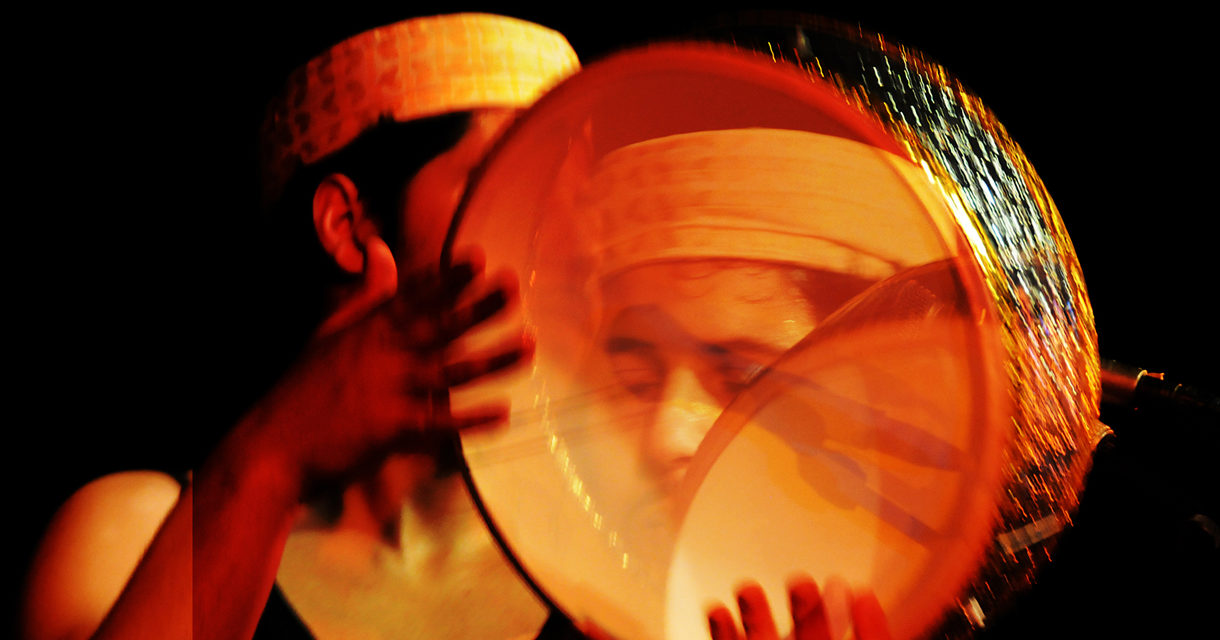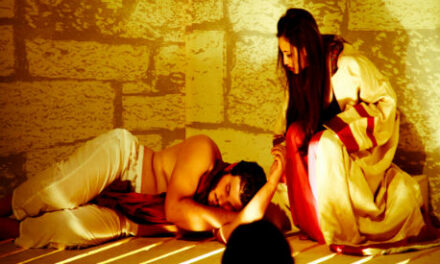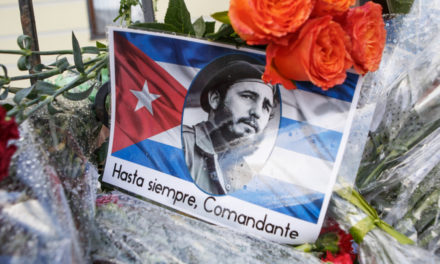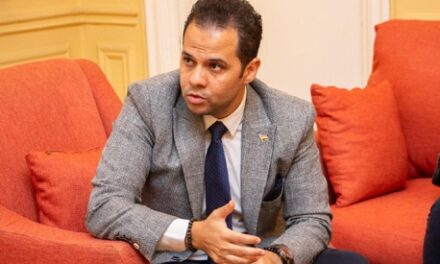In the two years since the beginning of the ‘Arab Spring,’ North African theatre practitioners have successfully invested the stage to open new spaces of public dialogue and debate, using the Internet and new media (Facebook, Twitter, YouTube) to further promote their work and to galvanize the youth. This essay will focus on selected plays from Tunisia, Egypt and Morocco performed in the years 2010-2012: while Tunisia and Egypt have managed to radically change their political landscape through protests and have since organized elections to decide on their new leaders, Morocco has been engaged in a relatively peaceful transition and provides a useful comparison. Moroccan artists have been active in voicing their support for the revolutions, and have a very socially engaged theatre scene that is less restricted by censorship. I argue that the ‘Arab Spring’ has led to a redefinition of the relationship between art, theatre and power, and has thus renewed a medium crippled by censorship. Through the prism of the revolution, theatre and performance have helped North Africans to express their thoughts and emotions and make sense of an exhilarating but confusing part of their history, as well as to empower them as citizens and as individuals.
In April and May 2010, mere months before the public immolation of Mohamed Bouazizi and the start of protests that would ultimately open a radically new political era for North Africa, Fadhel Jaibi’s play Amnesia-Yahia Yaich was performed in Tunis in front of an enthusiastic audience. The play is one of the most emblematic of pre-uprising North Africa and has since been performed in Morocco and at the Avignon festival in France as part of an ‘Arab Spring’-themed selection. Jaibi has long been one of Tunisia’s most controversial artists, alongside his collaborator and wife Jalila Baccar, but the play caused a stir because of its theme and because it announced the fall of a despotic minister in Tunisia. In hindsight, the play is strangely premonitory: the minister learns about this dismissal on TV, and the library containing all his documents and memories is burnt down mysteriously, erasing the traces of his past. He, however, lives on to face the corrupt society he has helped create. As his old collaborators abandon him, he becomes surrounded by a group of mysterious figures whose real identity is never revealed to him: they appear sometimes as doctors, sometimes as journalists, trying to make him speak. The oppressive atmosphere is further enhanced by the robot-like movements of the actors and the repetitive sound effects. Critics Khalid Amine and Marvin Carlson commented: “This 2010 production is a call for power holders to revise their relations with citizens; it is another exploratory study of identity and power relations in post-colonial Tunisia.”[1] The play was incredibly daring at the time: Jaibi’s previous play Khamsoun had been censored by the regime, while Amnesia is a very direct criticism of the regime’s corruption and attacks against the nation’s memory and history; it is a metaphor for a crumbling dictatorship. However, Jaibi is under no illusions as to why his work was not censored this time around, stating that Amnesia was used by the government as an “alibi and shop window”[2] to show Tunisia as a democratic country, respecting its citizens’ freedom of speech and allowing criticism. The play, however, is hardly representative of Tunisian theatre under Ben Ali: although he was feted for promoting Tunisia’s cultural scene and created regional centres for dramatic arts, theatre “was the only cultural form subject to censorship under the law up till 14 January 2011″[3] according to Amine and Carlson. Theatre was feared for its dissident qualities and its live aspect, making it difficult to monitor.
In Egypt, the theatre was similarly placed under tight control, preventing practitioners from freely addressing specific issues. Egyptian artist Hanaa Abdel Fattah called for a revolution in Egyptian theatre in a March 2011 interview for Ahram Online, noting that “Prior to the 25 January Revolution, Egyptian theatre productions were totally isolated and distanced from the social and political situation in the country. Theatre did not hear the social voices calling for democracy. On the contrary, all social needs were silenced as a result of direct censorship placed on the theatre by the Ministry of Culture.”[4] Arguably, the recent plays performed in Cairo were an answer to her demands. Sondos Shabayek and Laila Soliman, two emerging Egyptian directors, developed plays relating the experiences of young protesters and recording their memories. Both Tahrir Monologues and No time for art use techniques inspired by Boal and Brecht, placing themselves between reality and fiction, documentary and entertainment. In the context of the revolution, the plays were very efficient in terms of providing a space for expression and reflection in the midst of the violence and excitement of the streets; they also capitalize on the sense of freedom and energy created by the uprising. Central to this form of theatre is the idea of catharsis, of purging one’s emotions: drama becomes a stimulant, helping participants to deal with their memories and their trauma as they empathize with the actors. Sociologist Jean Duvignaud wrote that catharsis implies a sublimation of real conflicts,[5] while for Boal, catharsis becomes a political tool aimed at a “direct activation of the audience”[6] and leading them to act outside of the theatre space and make changes to their everyday lives. In this respect, Shabayek used amateurs to testify on stage rather than trained actors and the catharsis thus happens on both sides of the stage, as both the audience and the ‘testifiers’ come together through remembrance and shared experience. She also used the testimony of a young soldier to provide both sides of the story. In one especially poignant moment, a young man addresses a group of soldiers: “We are not here to stand against you. We are brothers, don’t beat us, please don’t beat us!”[7] Tahrir Monologues is an ongoing project, with Shabayek constantly calling for new testimonies. The possibility for all to express their individual experiences and to make sense of the events remain critical exercises in the building of a new era for Egypt.
No time for art is meant to be an homage to the martyrs of the revolution, and further blurs the line between theatre and reality by using snippets from the news. The superposition of testimonies and scripted scenes addressing military violence and unjustified arrests in the wake of Hosni Mubarak’s fall creates a complex piece that offers several avenues of reflection while also providing a raw, personal description of the uprisings. The play’s simple design, consisting an empty stage and performers wearing their everyday clothes, makes for a pared-down atmosphere, but again takes us away from the fictitious world of traditional theatre – in fact, we could be at a political meeting. The narrative is centred on the testimony of Aly Sobhy, an Egyptian actor who was arrested and tortured in March 2011. As a video of his arrest is shown, describing him and other protesters as ‘thugs’, Sobhy sits silently on the stage, exposing the lies and manipulations of state media. The performance gives the audience an important part too, by giving out papers with the names of dead protesters and asking them to impersonate the martyrs and to ask for justice in their names. The public is thus obliged to take an active role and question their own position as witnesses, and are given a voice after decades of state control and self-censorship. Through protests or by showing their support for different causes, they are able to make a difference. The website for the project features a link to a blog campaigning against military trials for civilians, illustrating the power of performance as a tool of activism.
Morocco, whose theatres were deserted by the public for decades after the golden years of the 1960s, now has a vibrant, socially-engaged art scene: although theatre companies suffer from lack of funding and access to adequate spaces, they do not have to deal with censorship on the same level as their neighbors. The theatre is used to promote the image of a dynamic, open country, with rich cultural offerings. With innovative techniques and through the use of satire, they have managed to reconcile Moroccans with theatre by addressing political and current issues, and thus making theatre a relevant part of social life. Indeed the events of the ‘Arab Spring’ found resonance in Morocco, with several companies using their neighbours as an inspiration: Daha Wassa staged a play called Exercices sur la revolution (‘Exercises on Revolution’), adapted from Abdellatif Laabi’s text Exercices de tolerance (1993), and Theatre Aquarium performed Voix off (‘Voice-over’), which overlaps memories of the Lead Years and scenes of torture with the excitement of the ‘Arab Spring’ and the calls for democracy.
Dabateatr is probably one of the most ground-breaking theatre groups in the kingdom: with their monthly arts and theatre festival in Rabat, Daba Citoyen (‘The citizen of Now’), they have established a sustained, regular theatre scene. Their methods also draw heavily on Boal and Brecht, in particular with their interactive, didactic approach. It has been argued that the popularity of Brechtian techniques amongst North African theatre practitioners is due to some similarities with Al-halqa, a popular traditional form of storytelling. Khalid Amine wrote about this connection between the two performance traditions: “As in Brechtian epic dramaturgy, al-halqa performers insist on historicizing their narratives, through comments and accompanying transitory devices.”[8] 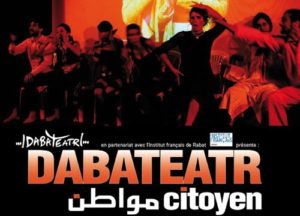 L’Khbar fi Masrah was the main attraction of the week-long festival that the company dedicated to Tunisia in February 2011. It was an evening of theatre and improvisation inspired by current news, both local and international: the actors thus often address controversial issues such as corruption, sexuality or the elections, and then invite their audience to discuss and debate both on the content of the performances and on the role of theatre within social and political life. Humour is an essential tool here: Stefan Meisiek notes that “it makes it possible to confront critical issues in the theatrical performance that would be avoided in other circumstances.”[9] The format of L’khbar fi masrah makes it easy for the actors to respond to events in a dynamic and creative way. The Tunisian edition of the festival featured a skit in which two men are sitting in a hammam and hear the voices of protesters in the streets, contrasting the mundane reality of most North Africans with the extraordinary events of the ‘Arab Spring’ as portrayed in the media. The company also held an event called Dabablog, to which they invited prominent Moroccan bloggers and web activists, and which highlighted the importance of new media but also revealed the gaps between those figures of the revolution and the audience members coming from more diverse and modest backgrounds. As Egyptian activist, Salma Said remarked, “the celebrities of the Revolution are all middle-class, English-speaking, not veiled girls who use Facebook and Twitter.”[10] While theatre has embraced the ‘Arab Spring’, its weakness is maybe its failure to address the issues encountered by the majority of North Africans in their everyday life to focus on the sensational, dramatic events of the revolution.
L’Khbar fi Masrah was the main attraction of the week-long festival that the company dedicated to Tunisia in February 2011. It was an evening of theatre and improvisation inspired by current news, both local and international: the actors thus often address controversial issues such as corruption, sexuality or the elections, and then invite their audience to discuss and debate both on the content of the performances and on the role of theatre within social and political life. Humour is an essential tool here: Stefan Meisiek notes that “it makes it possible to confront critical issues in the theatrical performance that would be avoided in other circumstances.”[9] The format of L’khbar fi masrah makes it easy for the actors to respond to events in a dynamic and creative way. The Tunisian edition of the festival featured a skit in which two men are sitting in a hammam and hear the voices of protesters in the streets, contrasting the mundane reality of most North Africans with the extraordinary events of the ‘Arab Spring’ as portrayed in the media. The company also held an event called Dabablog, to which they invited prominent Moroccan bloggers and web activists, and which highlighted the importance of new media but also revealed the gaps between those figures of the revolution and the audience members coming from more diverse and modest backgrounds. As Egyptian activist, Salma Said remarked, “the celebrities of the Revolution are all middle-class, English-speaking, not veiled girls who use Facebook and Twitter.”[10] While theatre has embraced the ‘Arab Spring’, its weakness is maybe its failure to address the issues encountered by the majority of North Africans in their everyday life to focus on the sensational, dramatic events of the revolution.
After the wind of freedom that swept North Africa, the return to normal life has proven difficult, as new regimes access to power and set up new rules. L’isoloir (‘The Voting Booth’), directed by Taoufik Jebali and his company El Teatro, the first private theatre group in Tunisia and established in 1987, is a play that focuses on the elections, the next step towards a democratic society after the fall of Ben Ali. It shows the tensions between Tunisians, and also questions the status and the role of theatre and culture in a society redefining itself. As the fall of the regime brought a sense of exaltation, the election of a new government also comes with new challenges. In the last few months, Tunisian artists and journalists have complained of new censorship threats: Reporters without Borders accused the new government of trying to control the media,[11] and artist Nadia Jelassi was charged with ‘breaching the peace’ in a controversial installation evoking stoning during the Printemps des Arts fair.[12] L’isoloir is an original take on the process of transition: after the fall of Ben Ali, Tunisians were given the opportunity to make a choice for their country, for their future, for the first time since gaining independence. They are, at last, citizens rather than subjects. It reveals a deeply divided society in the wake of the uprisings, with conflicting needs and demands, and it invites audiences to reflect on the significance of the vote in the current troubled context: this is a simple right, but one that people paid a high price for. Theatre here is more than a way to document reality: it becomes a social tool through which the ideals of citizenship and activism are debated and challenged, and a mirror reflecting Tunisians’ fears and aspirations. Of course, the voting exercise is one that ‘reveals’ a country to itself, behind the façade painted by the media. The election of An-Nahda in Tunisia showed a society more conservative and religious than had been assumed. Ben Ali had actively promoted the image of a very liberal secular society; in fact, Pierre Vermeren writes that his regime was perceived in the west as a last bastion against the Islamists.[13] L’isoloir is a narrative with which all Tunisians can identify: it is an existential reflection, capturing the moment where the voter isolates himself to think about his individual beliefs and political allegiances, after months of demonstrations during which Tunisians acted as a group, as a nation united around a single goal that was the end of the dictatorship.
Interactivity is an important aspect of contemporary North African theatre, going back to its street performance roots. The works of Dabateatr, Shabayek and Soliman demand direct involvement from the audience and seek to break the ‘wall’ between the stage and the auditorium. Amnesia, although it is not obviously interactive, puts the viewer in a potentially dangerous position: as witnesses, the audience members become accomplices in the resistant act of Jaibi, who remembers them constantly looking back during the performance, fearing arrest by the regime’s secret police. Journalist Fabienne Darge notes: “It turned into a genuine forum for debate, despite the 30 or 40 police officers who attended every evening”.[14]
This involvement of the public is further enhanced with the help of social networking websites, used mainly as a means to inform audiences of performances in the absence of theatre criticism and traditional media dedicated to the arts. The Internet has thus become an important tool supporting the practice of theatre-makers and helping them to reach out to their public. The Tahrir Monologues project, for example, has a dedicated website calling for Egyptians to send in their stories, and the performance constantly evolves as it receives new testimonials. New media also allows theatre companies to create archives of the work accessible to all both within and outside the country: Dabateatr created a YouTube channel called Daba Archives, which contains video clips of their work, but also recorded comments from audience members and videos from workshops organized in conjunction with Transparency Maroc, an association fighting corruption. They are thus able to reach a much wider audience that those able to attend the performances in Rabat.
In the context of the uprisings, new media, of course, played an important role in enabling protestors to organize themselves and to communicate in the midst of a media clampdown; Michael Teague describes these tools (namely Facebook, Twitter, YouTube, blogs, and to a lesser extent, texts) as allowing “for the quick and relatively unregulated sharing of information”.[15] The Internet also allowed the youth to get their own stories out, as against what was reported by the official media and in the international news report. Omar Kholeif noted in Platform 003 of Ibraaz that the ‘Arab Spring’ has placed the region under unprecedented scrutiny, with a one-dimensional view of the events being disseminated through the international media.[16] Performances distributed online, such as Tahrir Monologues, in particular, become a medium of resistance against simplistic or reductive portrayals of the region. Laila Soliman comments: “One of the aims of my work is to create an alternative version of history with the means of theatre. Especially now, where one can already see how the official history is being written”.[17] At the same time, the publicity gathered by those young artists and theatre practitioners describing their crumbling regimes also puts them in danger of being co-opted both by their own governments, as was Amnesia, and by international institutions eager to capitalize on the hunger for ‘Arab Spring’-themed pieces. How telling is it that Jaibi’s Amnesia was invited to the Avignon festival as part of the ‘Le Printemps Arabe fait son festival’ platform (‘The Arab Spring does its festival’), despite it being clearly created in a very different context? Another performance of Amnesia was organized in France in 2012 as part of an event about theatre and political resistance, where it was compared to Une Guerre Personelle (‘A personal war’) by Russian theatre director and activist Tatiana Frolov. This parallelism with the situation in Russia and the censorship affecting theatre practitioners shows the performance of Amnesia in Ben Ali’s Tunis as a real act of dissidence against a dictatorial regime and more than a reflection of the country’s despair. Jebali’s L’isoloir was similarly performed at the Carthage festival in 2012, organized around the theme of ‘Theatre Celebrates the Revolution’, which, while it reflected the dynamism of North African theatre in the last few years and its newly-found engagement with society, also restricted the reflection to North African political life and the transition towards freedom and self-determination.
To conclude, I would like to dwell further on the connections between performance and the revolution. Jean Duvignaud goes as far as to describe revolution as in itself a ‘theatricalization in acts’: it is a collective drama that has escaped the stage and taken up the streets, crystallizing energy and emotions through exaggerated, unnatural actions. The protestors become actors playing for a televized audience, hence the importance of the media: if Bouazizi’s desperate act had not been relayed by the media, both official and unofficial, would the events of the ‘Arab Spring’ have unfolded in the same way? Furthermore, theatre critic Nehad Selaiha describes a number of performances, skits, dances and songs that took place in the midst of the protests: “During the Tahrir Square 18 day long sit-in … theatre artists made their presence very much felt”.[18] There have been a very large number of plays, especially in Egypt, addressing directly the uprisings and their aftermath and making the most of the revolutionary atmosphere, at times festive, at times tragic. After years of being silenced and censored, North African youths are turning to theatre as both a tool for dissent and as a way to share their individual experiences of the events, speaking freely for the first time and keeping the momentum going. Political columnist Rami Khouri further notes: “People also feel empowered, in the sense that they feel they have the ability to improve conditions when those conditions are unsatisfying to them”.[19] Thus, as much as the revolution has provided a favorable environment for theatre practitioners, with inspirational stories, an enthusiastic atmosphere, and the end to censorship, theatre has also accompanied the protesters, from the dark times of dictatorships to the excitement of the first elections, and passing through Tahrir Square, mirroring the highs and lows of a complex transition.
Notes
[1] Khalid Amine and Marvin Carlson, The Theatres of Morocco: Algeria and Tunisia (Basingstoke: Palgrave Macmillan, 2012), 213.
This article was first published on www.ibraaz.org. Reposted with permission of the publisher. Read the original essay here.
This post was written by the author in their personal capacity.The opinions expressed in this article are the author’s own and do not reflect the view of The Theatre Times, their staff or collaborators.
This post was written by Cleo Jay.
The views expressed here belong to the author and do not necessarily reflect our views and opinions.

